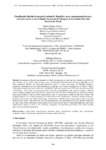Por favor, use este identificador para citar o enlazar este ítem:
http://www.alice.cnptia.embrapa.br/alice/handle/doc/1017535Registro completo de metadatos
| Campo DC | Valor | Lengua/Idioma |
|---|---|---|
| dc.contributor.author | LUZ, N. B. da | pt_BR |
| dc.contributor.author | OLIVEIRA, Y. M. M. de | pt_BR |
| dc.contributor.author | ROSOT, M. A. D. | pt_BR |
| dc.contributor.author | GARRASTAZU, M. C. | pt_BR |
| dc.contributor.author | FRANCISCON, L. | pt_BR |
| dc.contributor.author | MESQUITA JÚNIOR, H. N. de | pt_BR |
| dc.contributor.author | FREITAS, J. V. de | pt_BR |
| dc.date.accessioned | 2016-05-10T11:50:03Z | - |
| dc.date.available | 2016-05-10T11:50:03Z | - |
| dc.date.created | 2015-06-12 | pt_BR |
| dc.date.issued | 2015 | pt_BR |
| dc.identifier.citation | In: SIMPÓSIO BRASILEIRO DE SENSORIAMENTO REMOTO, 17., 2015, João Pessoa. Anais... São José dos Campos: INPE, 2015. | pt_BR |
| dc.identifier.uri | http://www.alice.cnptia.embrapa.br/alice/handle/doc/1017535 | pt_BR |
| dc.description | In response to the growing demand for reliable information on forest and tree resources as well as for land use/land cover (LULC) maps at larger scales, the Brazilian National Forest Inventory (NFI-BR) is now being conducted. Besides the traditional approaches related to forest assessment, the NFI-BR includes a geospatial component to provide such information at landscape scale. Using a sampling grid of 20 km × 20 km, field registry sample units were established, and 100 km2 landscape sample units (LSU) were located on a 40 km × 40 km grid. LULC maps are being prepared for each LSU using RapidEye and Landsat-8 imagery. Different remote sensing techniques are being tested to characterize LULC in order to identify patterns in different themes using spatial analysis, such as forest fragmentation, state of conservation, production and forest health. The mapping approach uses a hybrid approach, here understood as the combination of automatic unsupervised pixel-by-pixel classification and object based image classification. Attributes from image objects such as spectral characteristics, texture, and context are also involved in process tree classification, as well as ancillary data such as roads, water bodies and digital terrain models. LULC maps are the basis for analyzing landscape-scale forest fragmentation analysis as well as for evaluating compliance of permanent preservation areas under recently approved environmental legislation. | pt_BR |
| dc.format | Disponível online. | pt_BR |
| dc.language.iso | por | pt_BR |
| dc.rights | openAccess | pt_BR |
| dc.subject | Imagem de satélite | pt_BR |
| dc.subject | Inventário Florestal Nacional | pt_BR |
| dc.subject | Classificação orientada a objetos | pt_BR |
| dc.subject | Classificação automática de imagens | pt_BR |
| dc.subject | Brasil | pt_BR |
| dc.subject | Object-based classification | pt_BR |
| dc.subject | Automatic image classification | pt_BR |
| dc.subject | Ancillary data | pt_BR |
| dc.title | Classificação híbrida de imagens Landsat-8 e RapidEye para o mapeamento do uso e cobertura da terra nas Unidades Amostrais de Paisagem do Inventário Florestal Nacional do Brasil. | pt_BR |
| dc.type | Artigo em anais e proceedings | pt_BR |
| dc.date.updated | 2016-05-10T11:50:03Z | pt_BR |
| dc.subject.thesagro | Sensoriamento Remoto | pt_BR |
| dc.format.extent2 | p. 7222-7230. | pt_BR |
| riaa.ainfo.id | 1017535 | pt_BR |
| riaa.ainfo.lastupdate | 2016-05-09 | pt_BR |
| dc.contributor.institution | Naíssa Batista da Luz, ONU/FAO; YEDA MARIA MALHEIROS DE OLIVEIRA, CNPF; MARIA AUGUSTA DOETZER ROSOT, CNPF; MARILICE CORDEIRO GARRASTAZU, CNPF; LUZIANE FRANCISCON, CNPF; Humberto Navarro de Mesquita Júnior, Serviço Florestal Brasileiro; Joberto Veloso de Freitas, Serviço Florestal Brasileiro. | pt_BR |
| Aparece en las colecciones: | Artigo em anais de congresso (CNPF)  | |
Ficheros en este ítem:
| Fichero | Descripción | Tamaño | Formato | |
|---|---|---|---|---|
| 2015MariliceClassificacaohibridadeimagensLandsat8eRapidEye.pdf | 1 MB | Adobe PDF |  Visualizar/Abrir |









